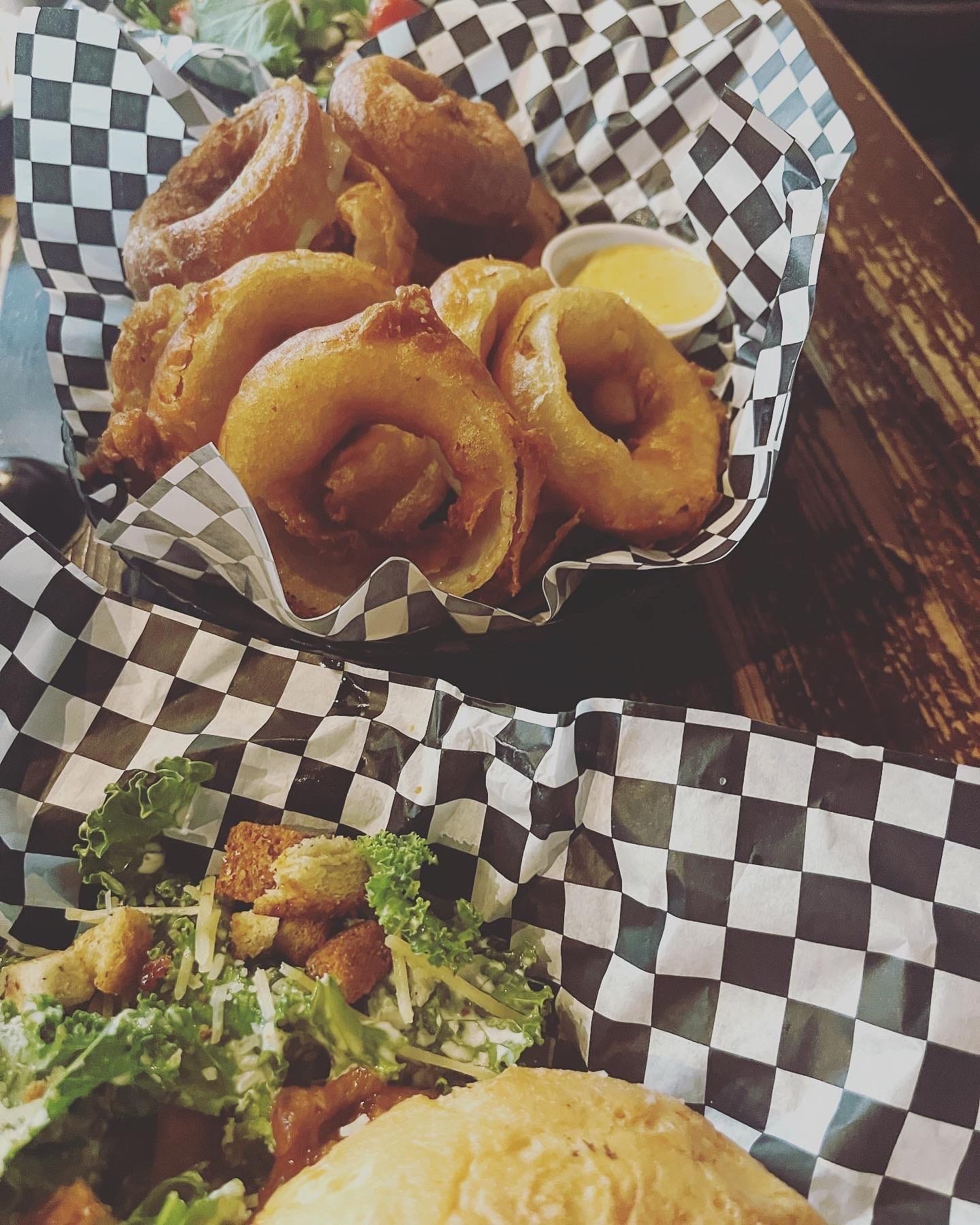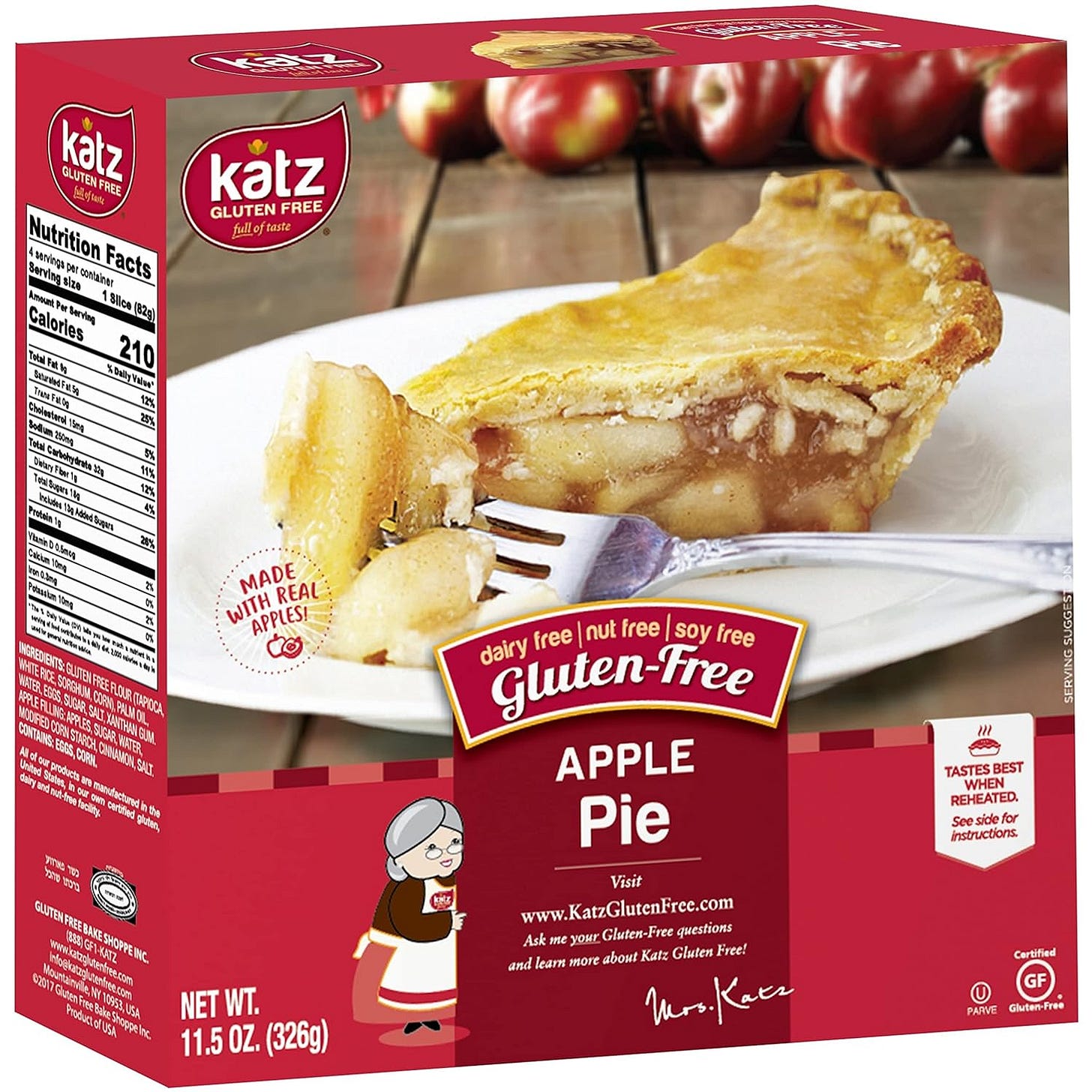7 Things I Wish I Knew About Celiac Disease When I Was Diagnosed
Going gluten-free is just the tip of the iceberg.
I didn’t know very much about celiac disease back when I was diagnosed in early 2020. My doctor told me I’d have to go gluten-free to manage the condition — but I wasn’t prepared for how much I’d have to overhaul my life.
At the time of my diagnosis, I didn’t know anyone else with celiac disease — so I had no one else to show me the ropes. I had anxiety about traveling and going to restaurants and was completely burnt out from having to cook all of my meals at home.
Thankfully, I found a good support group (through the Beyond Celiac Ambassador program) and have naturally become more comfortable with navigating celiac disease outside my home over time.
If you’re early on in your diagnosis and feeling as overwhelmed as I was in the beginning, then check out the list of the top seven things I wish I had known about celiac disease when I was first diagnosed.
1. It’s an autoimmune disease — not a gluten intolerance
As I wrote in my last newsletter, celiac disease is an autoimmune disorder, which means it’s a life-long condition that can lead to long-term health complications if left untreated.
Because I didn’t “look sick” on the outside and my symptoms were relatively mild when I was diagnosed, it was hard for me to reconcile the fact that this is, indeed, a very serious disease and that I would need to have regular follow-up appointments and tests to ensure things stayed under control.
And with so many people adopting a gluten-free diet for lifestyle purposes, it can be hard to get the outside world to understand that it’s a serious disease too.
I’ve gone to restaurants where menu items are labeled gluten-free, but then I find out they’re not prepared in a way that would make them celiac-safe — instead, they’re gluten-free for people who are on the diet for non-medical reasons.
2. The only treatment is adhering to a strict gluten-free diet
Currently, there aren’t any medications available for celiac disease (although there are a few in the works!). The only way to “treat” it at the moment is to eat gluten-free. But eating gluten-free for celiac is harder than you’d think.
In addition to making sure what you’re eating is actually gluten-free, you have to be vigilant about avoiding cross-contact when your food is being prepared. Eating even the tiniest amount of gluten can damage your intestines, regardless of whether or not it makes you feel sick.
This makes it hard to eat at restaurants — I always have to ask a ton of questions about how dishes are prepared. Even if something is labeled gluten-free on the menu, that doesn’t necessarily mean it’s cooked on a clean or separate surface from gluten-containing foods.
Case in point: I once went to a bar that listed chips and guac as gluten-free, but when I spoke to the waiter, he said the chips were fried in the same oil as gluten-containing foods — so they wouldn’t be safe for me to eat.

3. You’ll have to learn how to speak up for yourself
I didn’t realize how much I’d have to advocate for myself with celiac disease. It was hard to speak up for my needs at the beginning because I didn’t want to come across as a burden — but after a few times of doing it, it definitely got easier.
What does speaking up for yourself with celiac disease look like? For me, it looks like a few different things. It means educating myself and others about celiac disease. It means being proactive when I make plans with friends by asking if I can be the one to choose the restaurant so I can pick somewhere I feel safe eating.
If I’m going to a restaurant I’ve never been to before, then it means asking a lot of questions beforehand about how the food is prepared. If I’m invited to someone’s house for a birthday party or holiday get-together, then it means asking what they’re planning on serving ahead of time so I know whether or not I need to bring my own food.
Standing up for myself also includes saying no to events from time to time. Sometimes, I just don’t want to do all of the research that goes into ensuring I can eat safely — and sometimes, I just don’t want to have to answer questions about why I’m not eating.
4. The celiac lifestyle is freaking expensive
One of the biggest shocks I experienced upon being diagnosed? The price tag of living with celiac disease. I was really surprised at how much more expensive all of the packaged gluten-free items were than their gluten-containing counterparts. Gluten-free restaurants and bakeries tend to be more expensive too.
Research published in the journal Nutrients finds that gluten-free products are up to 183% more than conventional foods. In reporting on why gluten-free food is so expensive, I learned that this is due to a variety of reasons.
Many of the raw ingredients used in gluten-free products (like almond flour and coconut flour) are incredibly pricey — and obtaining a third-party gluten-free certification is very expensive as well.
On top of my inflated grocery bill, I also have to factor in the cost of regular doctor appointments and tests.
A few months ago, I spent over $1,100 for an endoscopy (which I’ll have to repeat in a few years) — and that’s with health insurance. I’ve also seen a dietitian on and off since my diagnosis — of course, the one I clicked with (who has celiac disease herself) doesn’t take insurance, and appointments with her cost $100.
Plus, many people with celiac disease are nutrient-deficient, so there are also vitamins and supplements to factor into your budget. I currently take a daily liquid multivitamin (the one I like costs $40 for about a month and a half worth of product) and was previously taking a vitamin D supplement on top of that for about the first year of my diagnosis.

5. You’ll have to do a lot of planning before going anywhere
Another surprise was how much planning I’d have to do before going out to eat or traveling. Gone were the days when I could stumble into any hole-in-the-wall restaurant that looked good. Instead, before going out to eat, I have to scour reviews online and contact the restaurant to ask a million questions about how the food was prepared.
This is something I still find to be a big adjustment, especially when traveling. I’m lucky enough to live in New York City, where there are many gluten-free establishments — but in other parts of the country (and the world), there aren’t always as many safe options.
Now, I map out everything when I travel. I create an itinerary in advance of a trip that includes all of the places I can eat in that area, and I book reservations well in advance. I will basically plan my entire day around where I can eat, and I always pack snacks with me in case my plans go awry.
6. It affects your mental health just as much as your physical health
I wasn’t prepared for how celiac disease would affect my mental health. I mourned the loss of my favorite foods (particularly New York pizza and bagels). I beat myself up on the rare occasions when I accidentally ate something with gluten in it.
I was frustrated that my semi-annual bloodwork was still showing elevated celiac antibodies — even though I was eating almost all of my meals at home to prevent cross-contact as much as possible. I dreaded having to cook another meal at home — it had started to feel like work to me even though it used to be something I enjoyed. And when I did have plans to go out, I had anxiety leading up to it.
These aren’t things any medical professional will tell you to expect when you’re diagnosed with celiac disease. Even now that I have a handle on managing the condition, I still have down days from time to time. Luckily, I’ve developed some good coping mechanisms, which I outline in my guide to celiac self-care.
7. But it doesn’t have to hold you back
Yes, your life will certainly change with celiac disease — but that doesn’t mean it has to hold you back. In some of the online support groups I joined, there were people who said they never went out to eat and never traveled — and that’s definitely not how I want to live my life.
Even though it takes more time and planning upfront, I still love trying new restaurants and traveling to new places. Since my diagnosis, I’ve traveled around the U.S. and even gone to four European countries.
While I was initially nervous, I ended up finding food options everywhere I went and now feel pretty confident about my ability to travel with celiac disease. It takes time to get comfortable with this new normal, but it’s totally doable with some practice under your belt.
Products I’m loving right now
Every newsletter, I’ll share (at least) three products that are currently part of my celiac self-care routine, from food to beauty to wellness. These are a few of my favorite fall-inspired treats:
Freedom Gluten-Free Mini Apple Cider Donuts: If you’re missing cider donuts from the farmstand, then these are for you. These powdered mini apple cider donuts are soft and fluffy with just the right amount of apple cider flavor.
Katz Gluten-Free Apple Pie: I’m all about taking the easy way out when it comes to preparing food for the holidays, and this gluten-free apple pie makes that possible. I like to serve it warm with ice cream.
Partake Ginger Snap Cookies: These cookies taste just like the traditional ginger snaps you know and love — but they’re free from the top nine allergens and are gluten-free and vegan.
Disclaimer: If you click on a link, I may get a small commission. This helps support this newsletter so I can keep writing it.



